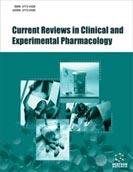Abstract
Background: Critically ill adults have Augmented Renal Clearance, (ARC) decreasing the systemic circulation of drugs with predominant renal elimination. The phenomenon of ARC is crucial for antimicrobial drugs as it hinders the therapeutic response and aids the development of antimicrobial resistance. The present study was conducted to assess the impact of ARC on an Intensive Care Unit (ICU) of a tertiary care hospital.
Methods: This was a prospective observational study carried out in critically ill patients with normal serum creatinine without any history of renal disease. Details on their demographic characteristics, clinical diagnoses, laboratory parameters including trough levels of vancomycin and gentamicin, ICU length of stay, and clinical outcomes (discharged alive/death) were obtained. Creatinine clearance (Crcl) was estimated from 24-hour urine creatinine. Monte Carlo simulation test with 100000 iterations was used for predicting serum vancomycin trough levels with the observed Crcl.
Results: Eighty patients were recruited in the study of which 52.5% had ARC. Patients in younger age and body weight were observed with a trend to have ARC. No significant differences were observed in any of the drug classes prescribed between patients with and without ARC, including the systemic antimicrobials. Although the observed serum trough levels of vancomycin in patients with ARC did not differ significantly from those without ARC, Monte Carlo simulation predicted that 90% of patients with ARC were likely to have trough levels between 5.63 and 7.85 mg/dl, while those without ARC may have it between 7.75 to 9.82 mg/dl.
Conclusion: A significant proportion of critically ill adults exhibit ARC and such patients are more likely to achieve lower trough concentrations of vancomycin than recommended. All critically ill adults with normal serum creatinine have to be screened for ARC using urine creatinine as soon as possible for appropriate adjustment in the dosage regimen of antimicrobials with predominant renal elimination.
Keywords: Augmented renal clearance, normal renal function, drug utilization study, sepsis, vancomycin, subarachnoid hemorrhage.
Graphical Abstract
[http://dx.doi.org/10.1097/TA.0000000000001211] [PMID: 27533906]
[http://dx.doi.org/10.3390/pharmaceutics9030036] [PMID: 28926966]
[http://dx.doi.org/10.1002/phar.2231] [PMID: 30723936]
[PMID: 25697881]
[http://dx.doi.org/10.1016/j.jcrc.2013.03.003] [PMID: 23683557]
[http://dx.doi.org/10.1002/phar.1653] [PMID: 26598098]
[http://dx.doi.org/10.1177/0310057X1804600107] [PMID: 29361255]
[http://dx.doi.org/10.1378/chest.124.3.1053] [PMID: 12970037]
[http://dx.doi.org/10.1007/s40262-018-0636-7] [PMID: 29441476]
[PMID: 30045791]
[http://dx.doi.org/10.1136/ejhpharm-2018-001781]
[PMID: 28936957]
[http://dx.doi.org/10.1128/AAC.02534-17] [PMID: 29987138]
[http://dx.doi.org/10.1186/s13054-015-0750-y] [PMID: 25632974]
[http://dx.doi.org/10.1186/cc12705] [PMID: 23642005]
[http://dx.doi.org/10.1007/s13318-019-00568-6] [PMID: 31301023]
[http://dx.doi.org/10.1097/MLR.0b013e318297429c] [PMID: 23703645]
[http://dx.doi.org/10.1016/j.medin.2018.02.004] [PMID: 29551234]
[http://dx.doi.org/10.1016/j.accpm.2017.12.003] [PMID: 29362162]
[http://dx.doi.org/10.2165/11318140-000000000-00000] [PMID: 20000886]
[http://dx.doi.org/10.5935/0103-507X.20140003] [PMID: 24770684]
[http://dx.doi.org/10.1097/TA.0000000000001387] [PMID: 28129261]
[http://dx.doi.org/10.1093/jac/dkz408] [PMID: 31648297]
[http://dx.doi.org/10.1097/PCC.0000000000001228] [PMID: 28640009]
[http://dx.doi.org/10.1186/s40560-019-0408-y] [PMID: 31832200]
[http://dx.doi.org/10.1111/jcpt.12088] [PMID: 23924288]
[http://dx.doi.org/10.1111/jcpt.12270] [PMID: 25865426]
[http://dx.doi.org/10.2147/IDR.S213183] [PMID: 31496765]
[http://dx.doi.org/10.1177/0310057X1404200606] [PMID: 25342403]
[http://dx.doi.org/10.3390/medicina55020033] [PMID: 30709064]
[http://dx.doi.org/10.1186/cc12777] [PMID: 23767877]
[http://dx.doi.org/10.1111/jcpt.12695] [PMID: 29733108]
[http://dx.doi.org/10.5414/CN109216] [PMID: 28699888]





























